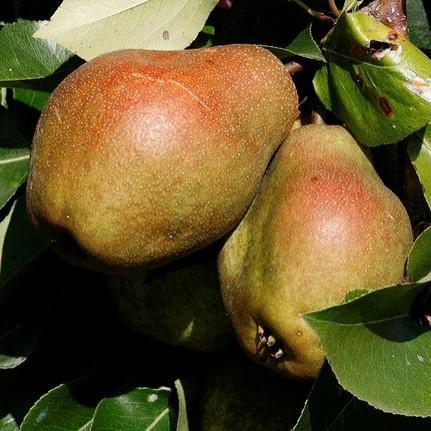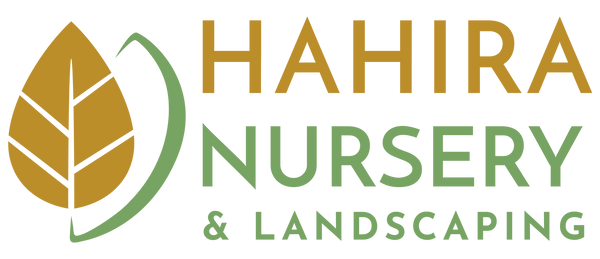
Kieffer Pear
Pyrus communis 'Kieffer'
- In stock, ready to ship
- Backordered, shipping soon
- Locally Grown
The Kieffer pear is a popular variety of pear tree that is known for its hardiness and versatility. Here's everything you need to know about Kieffer pears:
-
Appearance: Kieffer pears are medium to large in size and have a round, slightly bell-shaped appearance. The skin is thick and rough, with a greenish-yellow color that may have a reddish blush.
-
Taste and Texture: Kieffer pears are not typically eaten fresh as they have a coarse and grainy texture. However, they are excellent for cooking, canning, and baking. When cooked, they become tender and develop a sweet and tangy flavor.
-
Harvesting: Kieffer pears are usually harvested in late summer or early fall, depending on the region. It's important to pick them when they are still firm and slightly green, as they will continue to ripen off the tree.
|
Type: |
|
|
Height: |
12’ - 20’ |
|
Spread: |
10’ - 20' |
|
Spacing: |
15’ |
|
USDA Hardiness Zone: |
4 - 9 |
|
Culture: |
|
|
Bloom Color: |
White |
|
Season of Interest: |
MAINTENANCE NEEDS: High Maintenance. Needs regular watering. Peaches have a lot of pest and disease issues and need regular spraying to ensure good crop. Potential pests include tree borer, fruit moth, root nematodes, and aphids. Late spring frosts can severely damage flower buds. Fallen fruit can be messy if not harvested.
LANDSCAPE USES: Accents or Group Plantings, Borders, Wildlife Garden, Naturalized Areas, Ponds and Streams, Edible Gardens, and Containers.
COMPANION PLANTS: Rosemary, Strawberry, Pomegranate
IMAGE: Image: Photo by Gary Owens, Fall color, CC BY 2.0
* As plants have ranges in appearance they may not appear as the images shown.
Hahira Nursery takes pride in growing high-quality, fresh, healthy plants and ensuring they are delivered safely, on time, and with little to no damage so they are ready to be planted.
Despite all of our best efforts, once the plants have left our nursery, there are many variables outside of our control that can cause plants, flowers, trees, shrubs, or grasses to not thrive as they should. Plants are living organisms and are susceptible to a number of different environmental and care factors that are outside of our control.
Our goal is to build strong relationships with our customers and we always want to make things right, but we cannot always guarantee what happens once the plants are outside of our nursery, how you care for the plants, if they’re in the correct growing zones, weather damage, soil conditions, insect infestations, etc..
If you have any questions or concerns about a purchase you’ve made, please email us at info@hahiranursery.com and we will work with you on a case-by-case basis to the best of our ability.
Please note that all living organisms are not identical and their coloring, size, and shapes may differ from what you see online in our store. Each plant has its own characteristics that are impacted by the time of year, growth cycle, weather, and other elements which will cause them to look different than their photos.


